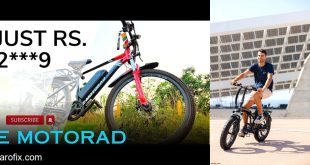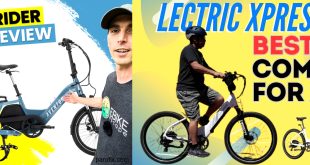How to Build Your Dream E-Bike?
Building your dream e-bike is like assembling a custom spaceship for city streets, trails, and weekend adventures. The thrill of riding a bike tailored exactly to your style—while contributing to sustainable transportation—is unmatched. Whether you’re a beginner tinkerer or a seasoned cycling enthusiast, creating your own electric bike is fully achievable with the right guidance, tools, and mindset.
Why Build Your Own E-Bike?
There are countless reasons to go DIY:
- Full Customization: Choose every component, from motor type to battery placement, to match your riding style.
- Learning Experience: Understanding the mechanics and electronics of e-bikes empowers you to maintain, upgrade, and troubleshoot confidently.
- Cost Efficiency: A self-built e-bike can save hundreds or even thousands compared to high-end commercial models.
- Eco-Friendly Transport: Converting an old bike or choosing modular components helps reduce environmental impact.
- Performance Optimization: Tailor torque, speed, and range for your specific needs, whether urban commuting or off-road adventure.
Personally, I once transformed a lightweight aluminum mountain bike into a sleek, mid-drive e-bike. It handled hills with ease, allowed me to zip through traffic, and felt like a personal triumph every time I pedaled. There’s a real satisfaction in saying, “I built this myself.”
Essential Components of Your Dream E-Bike
Every e-bike is a system of interdependent parts. Understanding the key components ensures your build is smooth and efficient:
- Motor: Choose between hub motors and mid-drive motors. Hub motors are easier to install and ideal for casual riding, while mid-drive motors deliver better torque, hill-climbing ability, and weight balance.
- Battery: Lithium-ion batteries dominate the market. Focus on voltage (36V–48V) and capacity (10Ah–20Ah) to balance speed, range, and weight. Integrated frame batteries offer sleek aesthetics, while rear-rack mounts are easier to swap.
- Controller: Acts as the “brain,” regulating power from battery to motor. Advanced controllers allow regenerative braking, pedal-assist adjustments, and integration with smartphone apps.
- Pedal-Assist Sensor: Monitors your pedaling and adjusts motor assistance accordingly. Torque sensors provide smoother, more natural support than cadence sensors.
- Throttle: Optional but handy for instant acceleration without pedaling.
- Frame: Aluminum, steel, or carbon frames are all viable. Consider strength, weight, and geometry for intended use. Heavier frames handle motor torque better, but lighter frames improve agility.
- Brakes and Gearing: Upgrade to hydraulic disc brakes for safety with increased speed and weight. Gears should complement motor torque for efficient climbing.
Step-by-Step Guide to Building Your Dream E-Bike
Here’s a structured approach to assembling your perfect e-bike:
- Choose Your Base Bike: Select a frame that suits your riding style. Mountain bikes excel on trails, while road or hybrid bikes work well for urban commuting.
- Select the Motor: Hub motors are beginner-friendly; mid-drive motors provide better torque and performance for hilly routes.
- Pick the Battery: Decide on placement (downtube, rear rack, or integrated) and capacity. Balance range needs with bike handling.
- Install the Controller: Connect the controller to motor, battery, and sensors. Secure it to the frame to prevent vibration damage.
- Install Pedal-Assist Sensor and Throttle: Align sensors carefully for accurate power delivery. Calibrate motor response for smooth acceleration.
- Upgrade Brakes and Gears: Ensure braking can handle extra speed and weight. Consider gear ratios that complement your motor’s torque.
- Test and Fine-Tune: Check electrical connections, wiring insulation, and torque settings. Test ride at low speeds before pushing limits.
- Optional Accessories: Add fenders, lights, racks, and smartphone mounts for comfort and utility.
Pro Tip: Always torque bolts to manufacturer specifications, especially around the motor and battery mounts. Loose hardware is a common cause of failures.
Technical Insights for DIY Builders
- Voltage and Current: Higher voltage increases potential speed. For instance, a 48V system with a 20A battery can produce ~960W peak power.
- Torque: Mid-drive motors typically provide 60–100 Nm, crucial for climbing steep inclines efficiently.
- Range Estimation: A 48V 15Ah battery generally provides 60–80 km of real-world range, depending on terrain, rider weight, and assist level.
- Weight Distribution: Central battery placement improves stability; heavy rear-mounted batteries may affect handling.
- Heat Management: Motors and controllers generate heat; ensure proper ventilation and avoid overloading for longevity.
Practical Tips for a Smooth Build
- Start Simple: Beginner builders should begin with front or rear hub motor kits.
- Upgrade Gradually: Begin with core components; performance upgrades can follow.
- Utilize Online Communities: Forums, YouTube tutorials, and e-bike groups provide invaluable guidance and troubleshooting tips.
- Safety First: Wear gloves, goggles, and protective clothing during assembly. Secure wiring to avoid snags.
- Test Incrementally: Begin with low-speed test rides and gradually explore higher speeds.

My Personal Dream E-Bike Build
Last year, I converted a vintage steel road bike into a mid-drive e-bike for city commuting. I chose a 500W mid-drive motor paired with a 48V 14Ah battery. Initial installation took two weekends, but the learning curve was incredible. I tweaked the pedal-assist modes for smoother acceleration, and now it’s my go-to for daily commutes. The feeling of passing cars stuck in traffic while silently gliding on electric power is simply unbeatable.
Sustainability and the Future of DIY E-Bikes
- Repurposing old frames and components reduces waste.
- Electric commuting decreases reliance on fossil fuels and reduces CO2 emissions.
- Future innovations include graphene batteries, smart controllers, and modular components for longer-lasting e-bikes.
- Solar charging integration and lightweight eco-friendly materials are becoming more accessible for DIY enthusiasts.
Frequently Asked Questions
Do I need technical experience to build an e-bike?
No. Beginners can start with hub motor kits and step-by-step tutorials. Mid-drive systems require more mechanical and electrical knowledge but are manageable with research.
How much does it cost to build a dream e-bike?
Basic conversions: $400–$600. High-performance builds: $1,500–$3,000, depending on motor, battery, and frame quality.
Is it safe to ride a DIY e-bike?
Yes, if components are installed correctly. Key safety measures: torque all bolts, secure wiring, test brakes, wear protective gear, and follow local regulations.
How long does it take to complete a build?
Hub motor kits: 3–5 hours. Mid-drive or custom builds: several weekends, depending on complexity and testing.
Can I convert any bike into an e-bike?
Most steel and aluminum frames work. Carbon frames require caution. Avoid thin or fragile frames that may warp under additional weight.
Future Trends in DIY E-Bikes
- Smart Controllers: AI-assisted systems optimize efficiency and energy use based on riding patterns.
- Advanced Batteries: Graphene and solid-state batteries promise faster charging, longer range, and reduced weight.
- Eco-Friendly Materials: Recycled metals, biodegradable plastics, and modular components reduce environmental impact.
- Integrated Connectivity: Smartphone integration, GPS tracking, and route optimization for smarter riding.
Conclusion
Building your dream e-bike is an exciting, empowering, and sustainable way to embrace personal mobility. From choosing the perfect frame and motor to customizing pedal-assist levels and battery placement, the journey teaches technical skills, creativity, and eco-conscious living. Whether your goal is a daily commuter, weekend adventure bike, or high-performance city machine, a DIY e-bike gives you total control and unparalleled satisfaction.
Highlighted Tip: Start with a solid base frame and mid-range components, test each system thoroughly, and upgrade gradually. This approach ensures safety, performance, and long-term enjoyment.
Your dream e-bike isn’t just about mechanics—it’s about freedom, sustainability, and crafting a ride that perfectly fits your lifestyle. So grab your tools, choose your components, and start building a personal electric masterpiece today!
 Electric Bike & Bicycle Repair Hub Master DIY electric and traditional bike repairs with practical tips and trusted product recommendations.
Electric Bike & Bicycle Repair Hub Master DIY electric and traditional bike repairs with practical tips and trusted product recommendations.



